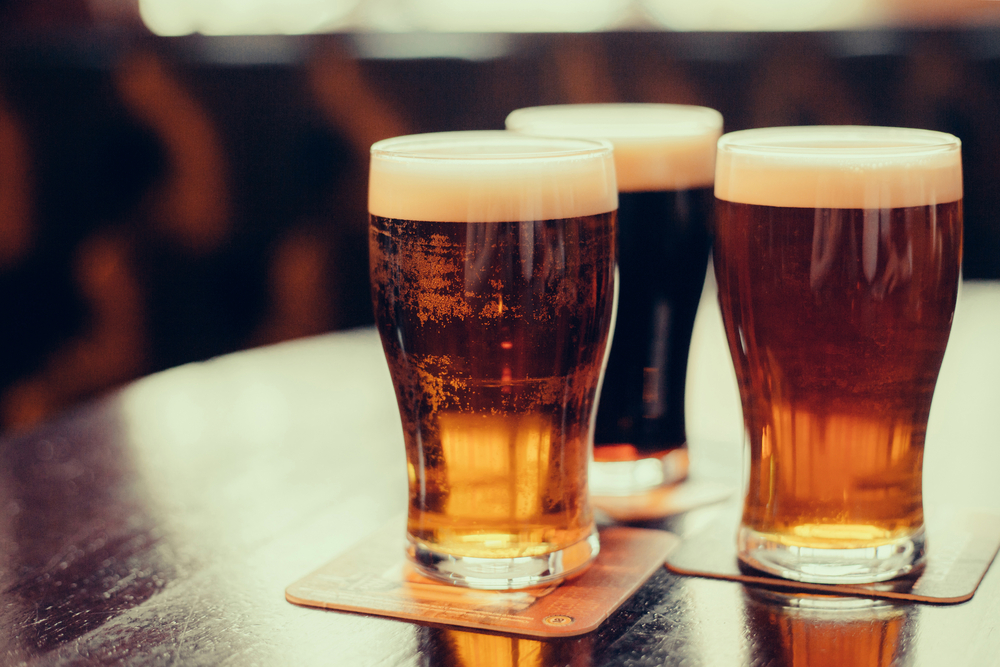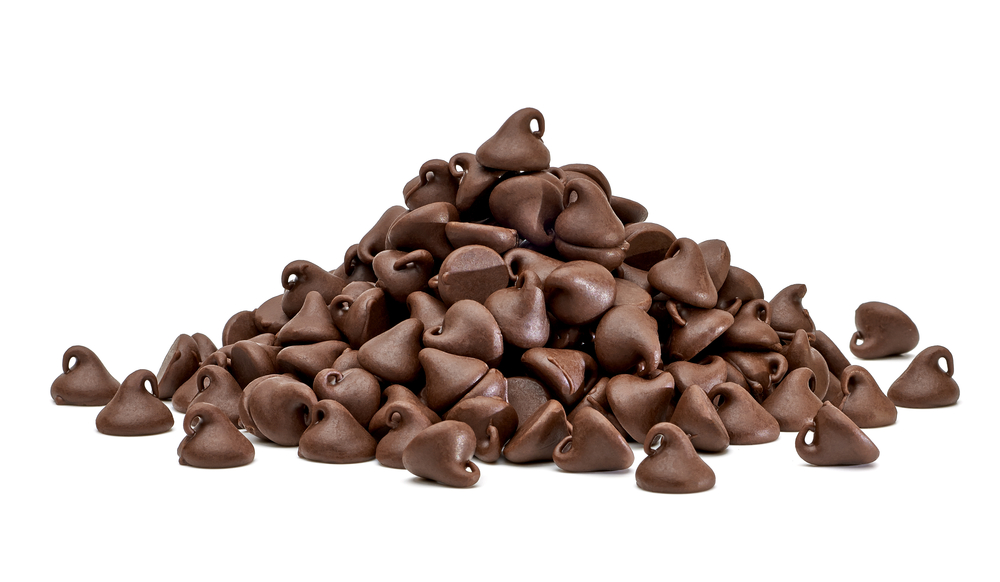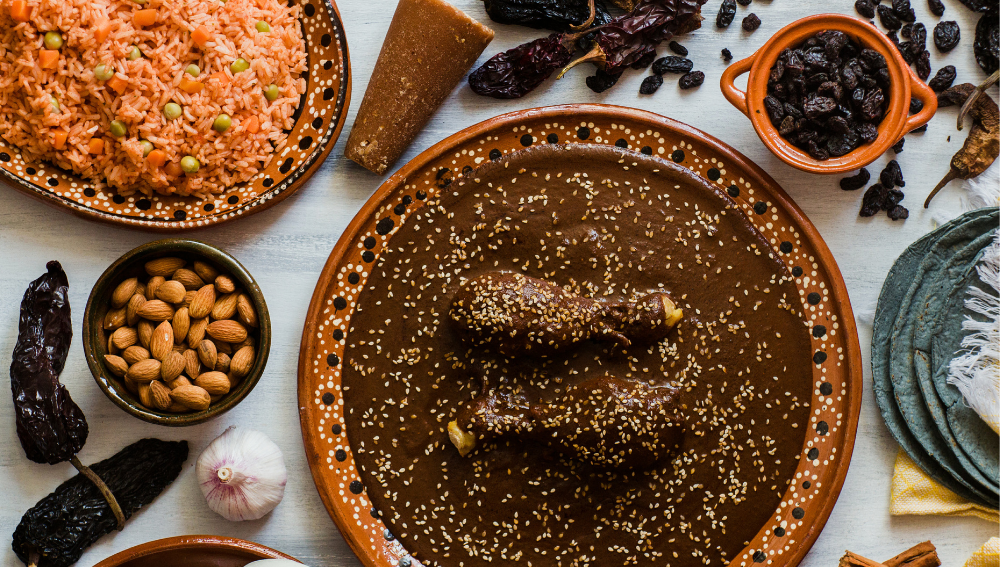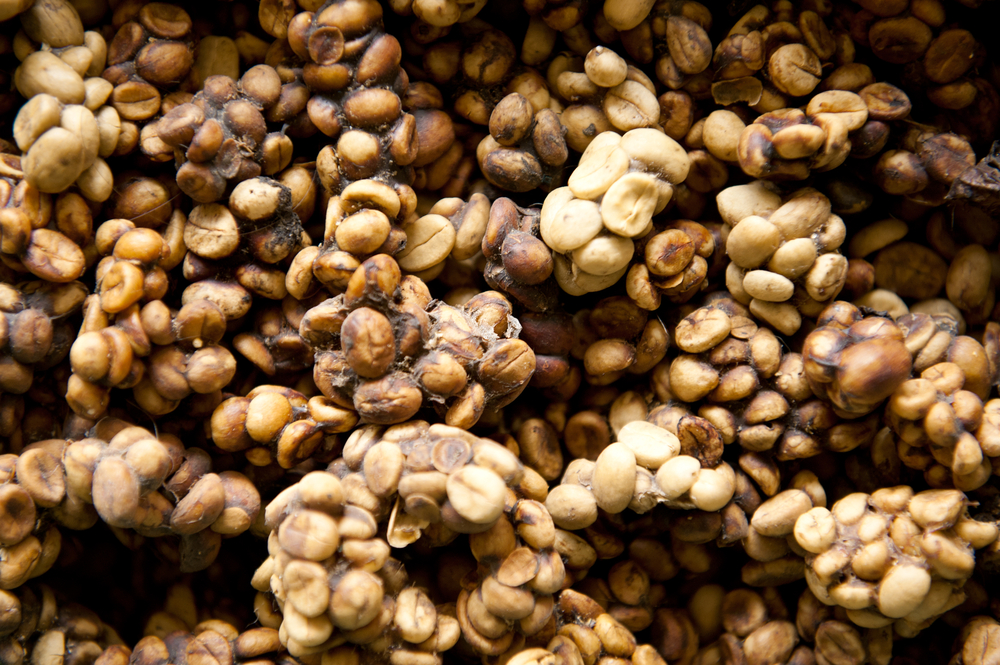I am often asked, “What does Guinness taste like?” As someone who has enjoyed this iconic beer for years, I can confidently say that Guinness has a unique taste profile that is unlike any other beer.
Guinness is known for its rich, creamy texture, and its distinct flavor that combines notes of roasted barley, coffee, and chocolate.

The taste of Guinness is influenced by a variety of factors, including the ingredients used in the brewing process, the role of nitrogen and carbon dioxide, and the way it is served. Guinness is brewed using roasted unmalted barley, which gives it a distinctive roasted flavor.
The use of nitrogen and carbon dioxide during the brewing process creates a smooth, creamy texture that is characteristic of Guinness.
Overall, Guinness is a complex beer with a rich, full-bodied flavor and a smooth, creamy texture. Whether you are a seasoned beer drinker or new to the world of beer, Guinness is a beer that is worth trying.
Key Takeaways
- Guinness has a unique taste profile that combines notes of roasted barley, coffee, and chocolate.
- The taste of Guinness is influenced by the ingredients used in the brewing process, the role of nitrogen and carbon dioxide, and the way it is served.
- Overall, Guinness is a complex beer with a rich, full-bodied flavor and a smooth, creamy texture that is worth trying.
What Is Guinness
As a beer lover, I have always been curious about Guinness and its unique taste. Guinness is a stout beer, which means it is a dark beer made with roasted malts or roasted barley, hops, water, and yeast.
It is an Irish dry stout, which means it is a type of stout that has a dry finish, with a low sweetness and bitterness.
Guinness is an iconic beer that has been around for over 250 years. It was first brewed by Arthur Guinness in 1759 in Dublin, Ireland. Since then, it has become one of the most popular beers in the world, with millions of pints being consumed every day.
One of the unique things about Guinness is its creamy texture and smooth taste. This is due to the use of nitrogen instead of carbon dioxide to carbonate the beer. Nitrogen creates smaller bubbles, which gives the beer a smoother and creamier texture.
Guinness is also known for its dark color and roasted flavor. This comes from the use of roasted barley in the brewing process. Roasting the barley gives it a dark color and a roasted flavor, which gives Guinness its distinct taste.
In summary, Guinness is an Irish dry stout beer that has a unique taste and texture. It is an iconic beer that has been around for over 250 years and is loved by millions of people around the world. Its creamy texture, smooth taste, and roasted flavor make it a popular choice among beer lovers.
The Taste Profile of Guinness
As a beer lover, I find Guinness to be a unique tasting beer that stands out from other stouts. Its taste profile is characterized by a perfect balance of bitterness and sweetness, with flavors of roasted coffee and dark chocolate.
The bitterness comes from the hops used in the brewing process, while the roasted flavor is courtesy of the roasted unmalted barley that goes into its production. The combination of these ingredients gives Guinness its signature taste and aroma.
The malty sweetness in Guinness is also an important part of its taste profile. It balances out the bitterness and adds a caramelized flavor to the beer. The creamy, long-lasting head provides additional bittersweet flavoring, making it a smooth and easy-to-drink beer.
One of the unique features of Guinness is its nutty flavor. This flavor is a result of the roasted barley, which gives the beer a distinct nutty taste that is not found in other stouts. The coffee notes in Guinness are also an important part of its taste profile.
The fresh roasted coffee flavor is balanced by slight hoppy and citrusy bitterness, making it a perfect beer to enjoy with dessert or on its own.
Overall, the taste profile of Guinness is complex and delicious. It is a beer that can be enjoyed by both casual drinkers and beer connoisseurs. Whether you are looking for a beer to pair with food or a beer to enjoy on its own, Guinness is an excellent choice.
Ingredients that Influence the Taste
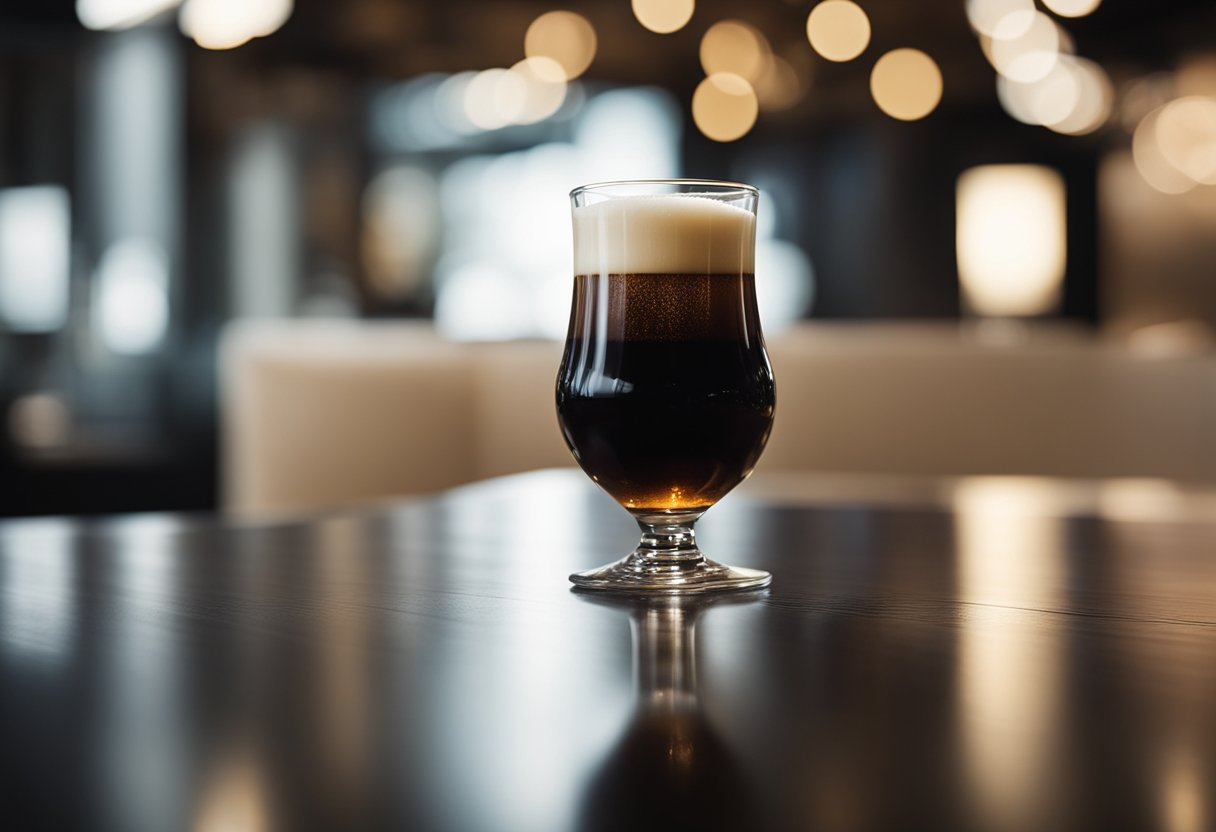
As a beer lover, I always wonder what makes Guinness taste so unique. After some research, I found that the ingredients used in the brewing process play a significant role in the taste of Guinness.
The four main ingredients in Guinness are barley, hops, yeast, and water. Each of these ingredients contributes to the taste of the beer.
Barley
Barley is the primary ingredient used in brewing Guinness. The barley used in Guinness is a combination of malted and unmalted barley.
The malted barley provides the beer with a sweet taste, while the unmalted barley gives it a roasted flavor. The roasted barley is what gives Guinness its distinct taste of coffee and chocolate.
Hops
Hops are used in the brewing process to balance out the sweetness of the malted barley. The hops used in Guinness are of the Fuggle and Golding varieties. These hops are known for their earthy and spicy flavor, which adds a subtle bitterness to the beer.
Yeast
Yeast is responsible for converting the sugar in the barley into alcohol during the fermentation process. The yeast used in Guinness is a strain of ale yeast. This yeast gives Guinness its signature creamy texture and smooth finish.
Water
Water is the most crucial ingredient in beer, and Guinness is no exception. The water used in Guinness comes from a well in the Wicklow Mountains in Ireland. This water is naturally high in minerals, which gives Guinness its unique flavor.
In conclusion, the taste of Guinness is a result of a combination of the four main ingredients used in the brewing process. The roasted barley, hops, yeast, and water all play a crucial role in creating the rich and complex taste of Guinness.
The Role of Nitrogen and Carbon Dioxide
As a beer lover, I have always been intrigued by the unique taste and texture of Guinness. One of the key factors that contribute to the distinctiveness of Guinness is the use of nitrogen and carbon dioxide during the brewing process.
Nitrogen gas is used instead of carbon dioxide to carbonate the beer. This results in a smoother and creamier texture, which is a signature characteristic of Guinness. The nitrogen bubbles are much smaller than carbon dioxide bubbles, which gives the beer a velvety texture and a thick, creamy head.
Carbon dioxide is still used in the brewing process, but it is used in a different way. Instead of being used to carbonate the beer, it is used to push the beer through the tap system.
This ensures that the beer is served at the right temperature and pressure, which is crucial for maintaining the perfect balance of bitter and sweet flavors.
The use of nitrogen and carbon dioxide also plays a role in the carbonation of the beer. Nitrogen gas is less soluble in liquid than carbon dioxide, which means that it creates a softer carbonation. This is why Guinness has a lower level of carbonation than most other beers.
In summary, the use of nitrogen and carbon dioxide is crucial in creating the unique taste and texture of Guinness.
Nitrogen gives the beer a creamy head and a velvety texture, while carbon dioxide is used to maintain the perfect balance of flavors and to ensure that the beer is served at the right temperature and pressure.
The Look of Guinness

As I pour a cold Guinness into a pint glass, I can’t help but admire its appearance. The dark ruby red color of the stout is truly distinctive and sets it apart from other beers. The appearance of Guinness is one of its most notable features and is often the first thing people notice about it.
The head of a Guinness is also an essential part of its appearance. When poured correctly, a thick and creamy head will form on top of the beer, which is a result of the nitrogen used in the brewing process. The head is a beautiful contrast to the dark color of the stout and adds to the overall aesthetic appeal.
The dark color of Guinness is a result of the roasted barley used in the brewing process. This gives the beer a rich and complex flavor profile that is hard to replicate. The color is not just for show, as it also affects the taste and mouthfeel of the beer.
Overall, the appearance of Guinness is a crucial part of its identity. The distinctive dark color, creamy head, and ruby red hue make it instantly recognizable and set it apart from other beers.
As I take my first sip, I can’t help but appreciate the care and attention that goes into every aspect of Guinness, from its appearance to its taste.
The Feel of Guinness
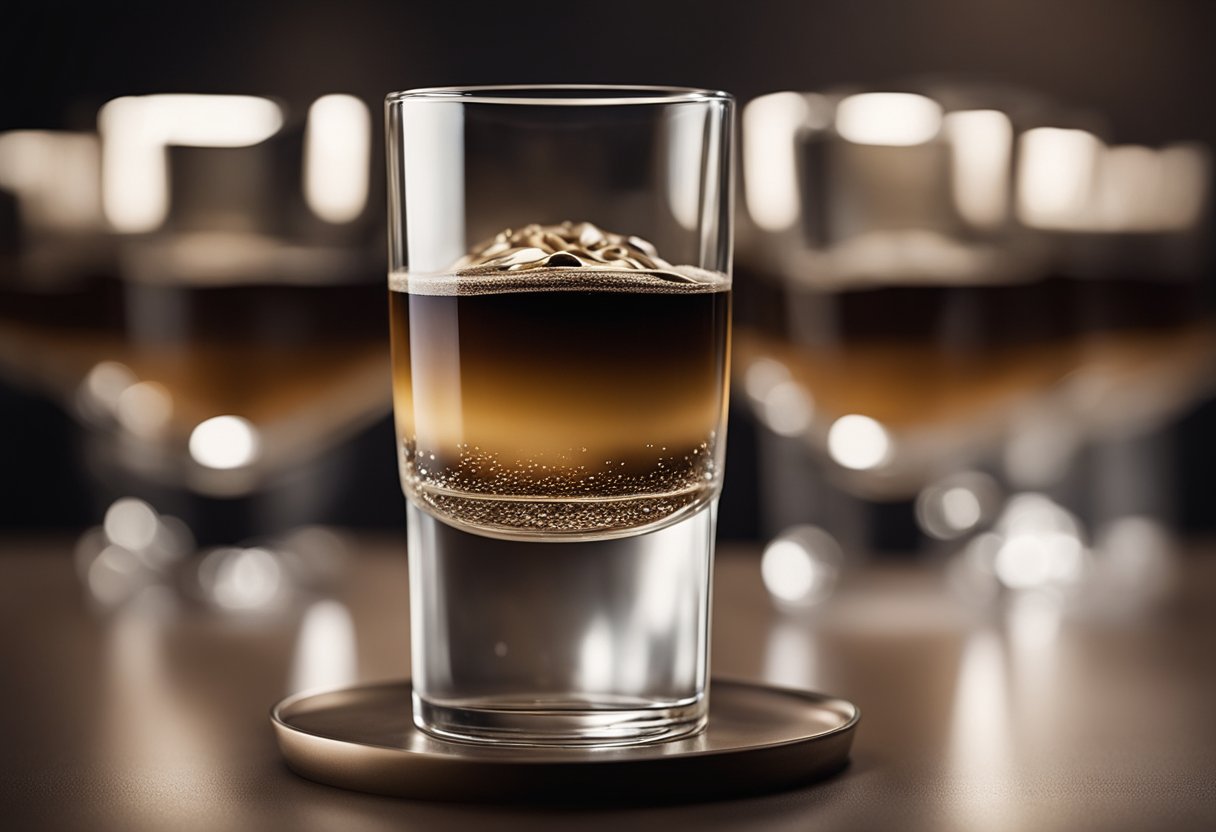
When it comes to describing the feel of Guinness, there are a few key characteristics that stand out. First and foremost, Guinness is known for its creamy texture and smooth mouthfeel.
This is partly due to the use of nitrogen in the brewing process, which creates smaller bubbles and a richer, smoother texture.
In terms of body, Guinness is considered to be a medium-bodied beer. This means that it has a fairly substantial feel in the mouth, without being overly heavy or thick.
The combination of the creamy texture and medium body makes Guinness a very satisfying beer to drink.
One thing to note about the feel of Guinness is that it can vary depending on how it is served. When poured properly, with a two-part pour that allows the nitrogen to settle, Guinness will have a thick, creamy head that adds to the overall mouthfeel.
However, if the beer is poured too quickly or too aggressively, the head may be too thin and the texture may be less creamy.
Overall, the feel of Guinness is one of its most distinctive features. Its creamy, smooth texture and medium body make it a very enjoyable beer to drink, and the use of nitrogen adds an extra layer of richness and complexity.
Whether you’re a fan of stouts or just looking to try something new, Guinness is definitely worth a taste.
Serving Guinness
When it comes to serving Guinness, there are a few things to keep in mind to ensure that you get the best experience from this iconic beer.
Glassware
One of the most important aspects of serving Guinness is the type of glassware you use. The traditional way to serve Guinness is in a pint glass, which is designed to enhance the flavor and aroma of the beer.
The shape of the glass helps to release the nitrogen bubbles, creating a creamy head and a smooth texture.
Temperature
Another important factor to consider when serving Guinness is the temperature. The ideal temperature for serving Guinness is between 6 and 8 degrees Celsius.
This temperature range ensures that the beer is not too cold, which can numb the taste buds and mask the flavors, and not too warm, which can cause the beer to lose its carbonation and become flat.
Draught Guinness
If you are serving draught Guinness, it is important to pour the beer correctly to achieve the perfect pint. Start by holding the glass at a 45-degree angle and slowly pour the beer until it reaches the halfway point.
Then, allow the beer to settle for a few seconds before slowly pouring the rest of the beer into the glass. This technique helps to create the iconic creamy head that Guinness is known for.
Can and Bottle
If you are serving Guinness from a can or bottle, it is important to pour the beer into a glass to release the nitrogen bubbles and create the creamy head.
When pouring from a can, open the can and wait for a few seconds before pouring the beer into the glass. This allows the nitrogen to be released and ensures that the beer is not too fizzy.
Type of Glass
While a pint glass is the traditional way to serve Guinness, there are other types of glassware that can be used. For example, a tulip glass or a snifter can also enhance the flavors and aromas of the beer.
However, it is important to choose a glass that is designed to release the nitrogen bubbles and create the creamy head.
In summary, serving Guinness is all about attention to detail. Choosing the right glassware, serving at the right temperature, and pouring the beer correctly can all help to enhance the flavor and aroma of this iconic beer.
The Brewing Process
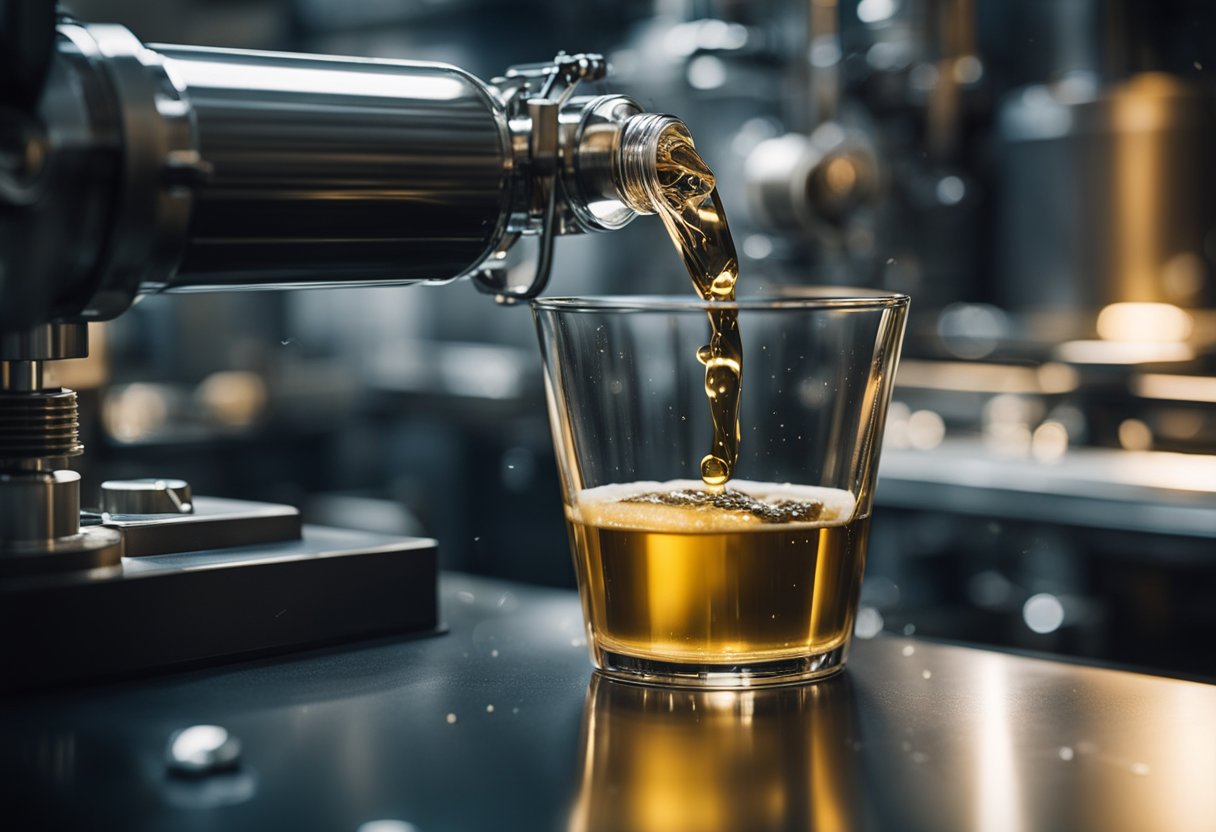
I’ve always been fascinated by the brewing process of Guinness. It’s a complex process that involves several steps and takes around 10 days to complete. Here’s a brief overview of the brewing process of Guinness.
The Ingredients
The brewing process starts with the selection of high-quality ingredients. Guinness uses four key ingredients: water, barley, hops, and yeast.
The water used in the brewing process comes from a natural spring located beneath the brewery. The barley is malted and roasted to give Guinness its distinct flavor. Hops are added to balance the sweetness of the malt and yeast is used to ferment the beer.
Mashing and Boiling
The first step in the brewing process is mashing. The malted barley is mixed with hot water to create a mash. The enzymes in the barley break down the starches in the grain into sugars.
The resulting liquid is then boiled with hops to add bitterness and flavor to the beer. This process takes around 2 hours.
Fermentation
After boiling, the liquid is cooled and yeast is added to start the fermentation process. The yeast consumes the sugars in the liquid and produces alcohol and carbon dioxide. The fermentation process takes around 3-5 days and is carried out in large fermentation tanks.
Maturation
After fermentation, the beer is transferred to maturation tanks where it is left to mature for several days. During this time, the flavors of the beer develop and mature. Guinness is matured for around 4-6 days.
Carbonation
Once the beer has matured, it is carbonated before being packaged. Carbon dioxide is added to the beer to give it its characteristic creamy head. Guinness is carbonated using a mix of nitrogen and carbon dioxide.
The 9,000-Year Lease
One interesting fact about Guinness is that the brewery has a 9,000-year lease on the land it occupies in Dublin. The lease was signed in 1759 by Arthur Guinness, the founder of Guinness.
The lease costs just £45 per year and has been renewed several times over the years. It’s a testament to the longevity of the Guinness brand and its importance to the city of Dublin.
Different Varieties of Guinness
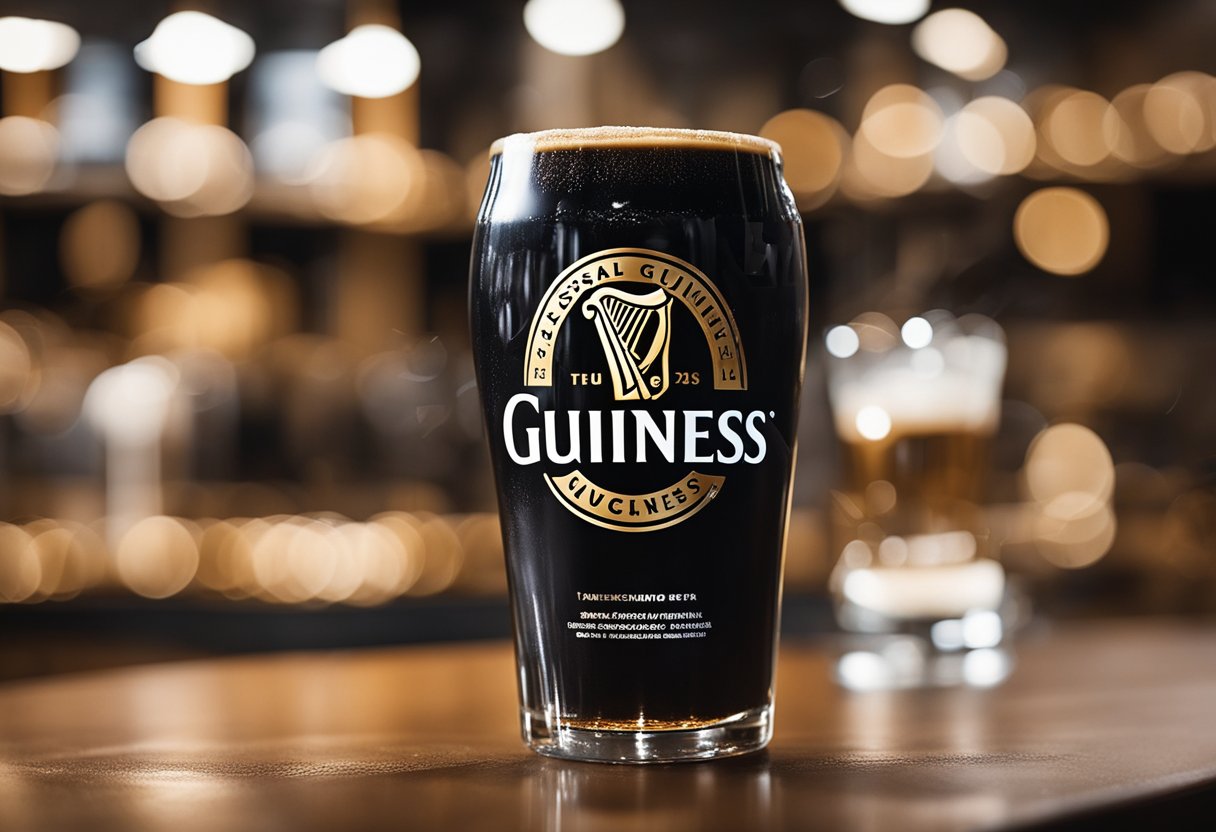
As a beer lover, I have tried different varieties of Guinness, and each one has a distinct taste and character. Here are some of the most popular Guinness varieties and what makes them unique:
Guinness Draught
Guinness Draught is the most popular and widely available Guinness variety. It is a dark beer with a creamy texture and a smooth, velvety finish. The beer has a rich, malty flavor with notes of coffee and chocolate. It is brewed with roasted barley, which gives it its dark color and unique taste.
Guinness Draught is often served on tap with a nitrogen gas mix, which creates a creamy head and enhances the beer’s flavor and aroma.
Guinness Extra Stout
Guinness Extra Stout is a stronger and more robust version of Guinness Draught. It has a deep, dark color and a bold, complex flavor profile. The beer has a rich, malty taste with hints of coffee, chocolate, and caramel.
It is brewed with a higher percentage of roasted barley and hops, which gives it a more bitter and hoppy taste. Guinness Extra Stout is often served in bottles or cans and has a higher alcohol content than Guinness Draught.
Guinness Nitro IPA
Guinness Nitro IPA is a modern twist on the classic Guinness recipe. It is an India Pale Ale (IPA) brewed with nitrogen gas, which creates a smooth, creamy texture and enhances the beer’s flavor and aroma.
The beer has a hoppy, citrusy taste with notes of grapefruit and pine. It is brewed with a blend of American and British hops, which gives it a unique and complex flavor profile.
Guinness Foreign Extra Stout
Guinness Foreign Extra Stout is a stronger and more robust version of Guinness Extra Stout. It has a higher alcohol content and a more intense flavor profile. The beer has a rich, malty taste with notes of coffee, chocolate, and dark fruit.
It is brewed with a higher percentage of roasted barley and hops and is often aged for several months to enhance its flavor and aroma. Guinness Foreign Extra Stout is often served in bottles or cans and is a popular choice among beer enthusiasts.
In conclusion, Guinness offers a variety of beers with distinct tastes and characters. Whether you prefer a creamy and smooth Guinness Draught or a bold and robust Guinness Extra Stout, there is a Guinness variety for everyone.
Pairing Guinness with Food
Pairing Guinness with food is a delightful experience. The rich, smooth, and creamy texture of the beer complements many dishes, enhancing their flavors. Here are some food pairings that I recommend when enjoying a pint of Guinness:
Beef Stew
Beef stew is a classic dish that pairs perfectly with a pint of Guinness. The bold and robust flavors of the stew complement the malty sweetness and hoppy bitterness of the beer. The beer also adds a depth of flavor to the dish, creating a savory and satisfying meal.
Cottage Pie
Cottage pie is another dish that pairs well with Guinness. The creamy and rich texture of the beer complements the hearty and savory flavors of the pie. The beer also cuts through the richness of the dish, making it more enjoyable to eat.
Stews
Stews, in general, are excellent food pairings for Guinness. The beer’s complex flavors and creamy texture complement the rich and hearty flavors of the stew. The beer also enhances the dish’s flavors, creating a more satisfying and enjoyable meal.
Other Food Pairings
Aside from stews, other food pairings that go well with Guinness include oysters, fish and chips, spicy tacos, sushi, and cheese platters. The beer’s versatility makes it an excellent companion for a wide range of traditional and unconventional foods.
In conclusion, pairing Guinness with food is a delightful experience that enhances the flavors of both the beer and the dish. When enjoying a pint of Guinness, I recommend trying it with beef stew, cottage pie, stews, or other food pairings to create a more satisfying and enjoyable meal.
Nutritional Aspects of Guinness
As a beer, Guinness contains calories, carbohydrates, and alcohol. It is also rich in antioxidants, fiber, and other nutrients.
Here are some of the nutritional aspects of Guinness:
- Calories: A 12-ounce serving of Guinness contains about 125 calories. This is relatively low compared to other beers and alcoholic beverages.
- Alcohol Content: Guinness has an alcohol by volume (ABV) of 4.2%. This is also relatively low compared to other beers and alcoholic beverages.
- Antioxidants: Guinness is rich in antioxidants, which are compounds that help protect the body against damage from free radicals. These antioxidants come from the roasted barley used in the brewing process.
- Fiber: Guinness contains fiber, which is important for digestive health. The fiber comes from the barley used in the brewing process.
- Vegan-Friendly: Guinness is made without any animal products, making it a vegan-friendly beer. It is also certified as vegan by the Vegan Society.
In conclusion, Guinness is a relatively low-calorie, low-alcohol beer that is rich in antioxidants and fiber. It is also vegan-friendly, making it a good choice for those following a plant-based diet.
The Legacy of Guinness
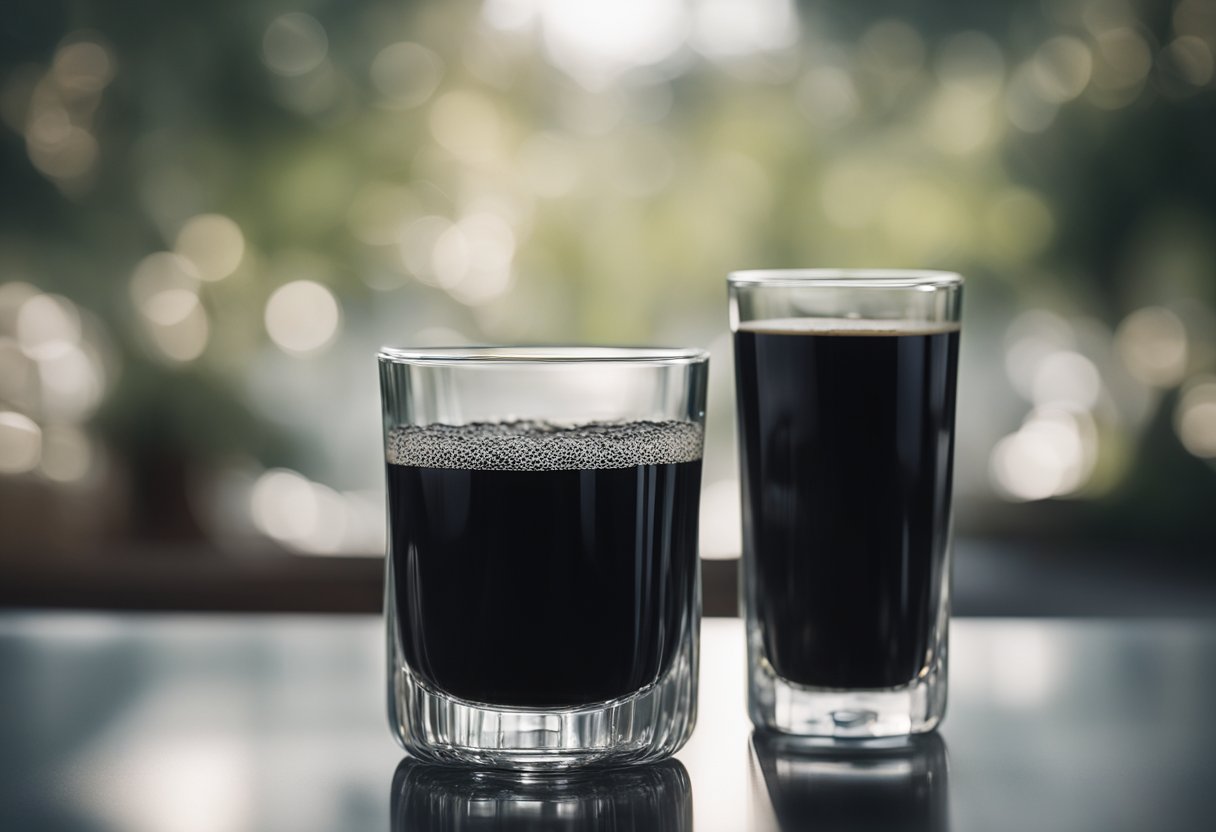
As a beer that has been around for over 250 years, Guinness has a rich history that has helped to shape the beer industry as we know it today.
The beer was first brewed in Dublin, Ireland in 1759 by Arthur Guinness, and has since become one of the most recognizable beer brands in the world.
One of the things that sets Guinness apart from other beers is its use of isinglass, a substance derived from fish bladders that is used to clarify the beer.
While some people may find this off-putting, it has been a part of the Guinness brewing process for centuries and is an important part of the beer’s legacy.
Despite its long history, Guinness has also been at the forefront of innovation in the beer industry. In recent years, the company has introduced new products such as Guinness Nitro IPA and Guinness Blonde American Lager, showing that they are not afraid to experiment and try new things.
Overall, the legacy of Guinness is one of innovation, tradition, and quality. As someone who has tasted the beer myself, I can say that it truly lives up to its reputation as a smooth and flavorful beer that is perfect for any occasion.
Frequently Asked Questions
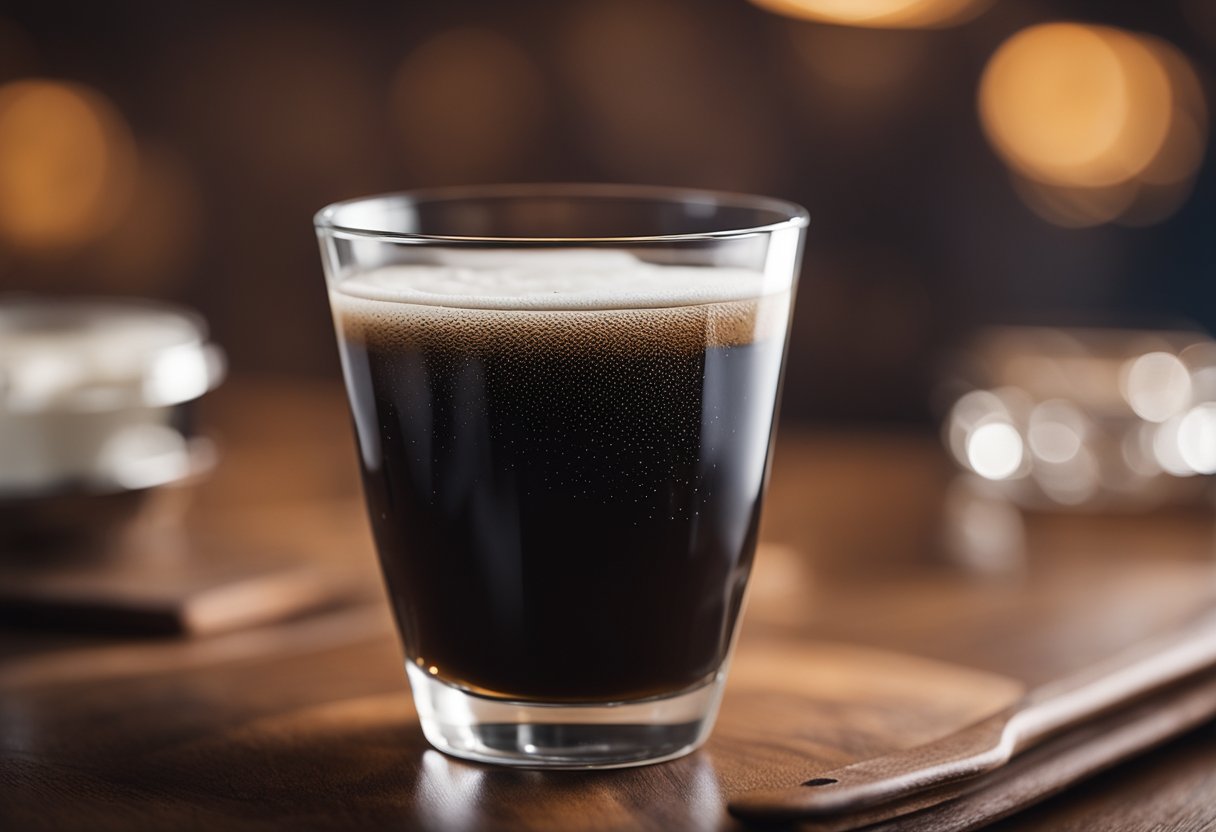
Does Guinness taste better in Ireland?
Many people believe that Guinness tastes better in Ireland. While the recipe and brewing process are the same worldwide, some say that the water in Ireland makes a difference. However, this has not been scientifically proven.
Does Guinness taste like chocolate?
Guinness has a unique taste that is often described as having hints of chocolate and coffee. However, it is not a chocolate-flavored beer.
Is Guinness sweet or bitter?
Guinness has a balance of sweetness and bitterness. It has a malty sweetness and a hoppy bitterness that are well-balanced.
Does Guinness taste flat?
No, Guinness should not taste flat. It should have a creamy head and a smooth mouthfeel. If it tastes flat, it may be due to improper storage or pouring.
What does Guinness taste similar to?
Guinness has a unique taste that is not easily compared to other beers. However, it has been described as having similarities to coffee and dark chocolate.
How does Guinness taste compared to other beers?
Guinness has a distinct taste that sets it apart from other beers. It has a creamy mouthfeel, a balance of sweetness and bitterness, and hints of chocolate and coffee. It is not as carbonated as other beers and has a lower alcohol content.


